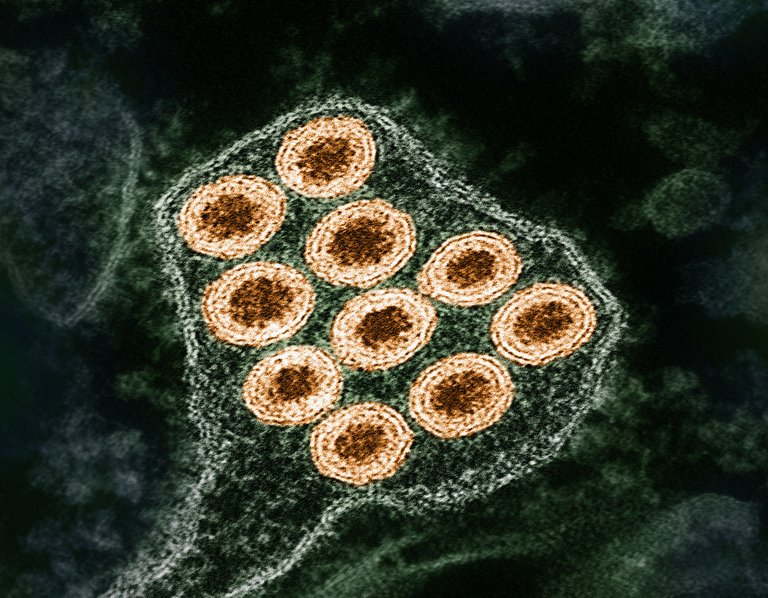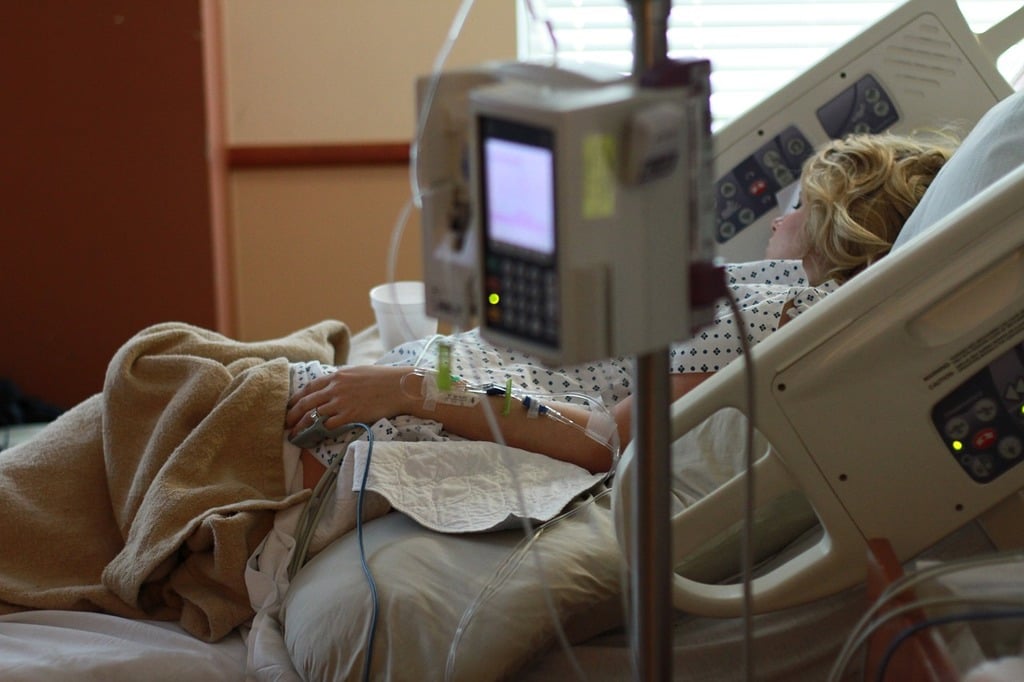Medical Case of Jeanna Giese (The First Person to Survive Rabies Infection)
There is always a first time for everything and in the case of rabies, there was a first time for the disease which scientists say that it is almost impossible to treat a person who has started showing symptoms of the virus but then, there is always a first time to have the first person when it comes to health. The first person to contract an infection, the first person to transfer the infectious pathogen, the first person to treat a condition, the first person to be treated of a condition, the first person with failed experiment, and also the first person to survive a disease. In this post, I will be sharing about the last which is the first known survivor of Rabies.
This is the case of Jeanna Giese and will be starting from June 6, 1989 when she was born. She grew up in Wisconsin along with her three brothers, her mom and her dad. Jeanna loved animals as she had 2 dogs and 3 rabbits. She loved animals but not all animals should be extended the hand of friendship, especially a Bat.

On the 12th of September 2004, she came in contact with a bat which was flying around the church and wanted to leave the church but was finding it hard to leave. The bat had been hit by an usher and was laying on the ground. She wanted to help the bat out, so she picked up the bat which was laying on its back on one of its feather. The bat screeched as she picked it up. She tried to take it out but the bat had attacked her with its left fang. As she kept on shaking the bat off her finger so as to be able to let it go, it would not leave her hand as its fang was stuck in her fingers. She was able to force it off but this as the beginning of another chapter in her life.
She was able to explain to her parents when she got home but told them it was just a little scratch. Her father was not happy about this but she reassured them that there was nothing that was going to happen as there were no visible cut but there was a small puddle of blood that formed below her finger.
October of 2004 when the 15 year-old young lady decided to go to school but she was feeling very ill. She was fine the previous week and do not understand why she would not be feeling well that day. The symptoms of her illness were fever, chills, fatigue, nausea and so on. She eventually went to school and was able to participate in different activities but she was still feeling terrible. Soon it became a thing everyday and one Saturday, she was unable to get up from bed.

She went to the hospital and several test were ran on her but they all came back with nothing and she was sent home but she knew there was something wrong with her. Soon she went to the hospital again and it was then it was seen that she was infected by the rabies virus. She was laying there in the hospital, unable to walk or move. Doctors gathered around as they needed to understand this and find a solution because she wasn't having much time left. They were not certain if she was going to make it pass the day, so they had to do a lot of things to keep her alive.
As at the time, less than 1% of the bats carried the virus and even till date, it is the same thing. Three weeks after the incident, she noticed that the bitten finger began to experience numbness as well as tingling which progressed to her forearm. While her day to day activities continued, she started experiencing chills, fever, fatigue, worn out, and cold. Her mom thought it had something to do with her nervous system and so she went to the hospital.
At the hospital, a neurological examination was done on her and nothing was seen to be wrong with her including MRI scans and she was asked to go home since there were no reason to worry. Soon, she returned to the hospital with her mom because her condition had worsen. She couldn't do anything and so needed to be brought back to the hospital. At this time, her mom told the neurologist everything about her previous month including the bat bite.

The doctor told her not to worry because the wound was healed and she was discharged but she was brought back the same day because this time, she was going in and out of consciousness. It was at this point that she was hospitalized and a spinal tap was done on her as well as a host of other tests but the results were all coming back negative. In all this, her condition was getting worse and she could not move. Her hands began to jerk uncontrollably and she began to produce excess saliva and her temperature rose uncontrollably.
Rabies is a very terrible virus that is highly fatal and spreads from infected animals such as dogs, Raccoon, Foxes, Coyotes, Bats, and Skunk to humans or other animals. This is transferred from the saliva of the infected animals and there are two types of this rabies with one being Furious rabies which is characterized by hyperactivity and hallucination, and Paralytic rabies characterized by paralysis and coma.
The animal saliva or scratch allows the virus to enter through the opening and it hijacks the transport system of the nerve cells in the body after which it attacks the nervous system and finds its way to the brain where a series of symptoms is experienced. It then begins to shut down the organs in the body one after the other. One of the biggest fear for people with rabies is hydrophobia, as well as extreme muscle spasms, over-stimulation by light, aggression, rage, and screaming.
The doctors were going to try a treatment which was new to them. They were going to protect Jeanna's brain before the virus got to it so as to allow the immune system fight it off. They were not going to cool down the brain because hypothemia slows the immune system's ability to fight. The only chance they had was to induce a coma just like doctors did with patients with epilepsy allowing the membranes in the brain cells to heal. They were also going to use Ketamine which was used for treatent in a study with rat infected with rabies but then it came with some possible side effects including hallucination.

The doctors decided to inject a combination of Midazolam and Ketamin to induce a coma as well as help the body fight the virus. Even if they were able to fight the virus, there were a lot of concern for the doctors such as cases of possible paralysis, not waking up from the coma, and development of locked-in syndrome. In addition to the treatment, they added ribavirin which was an antiviral that wasn't approved yet at the time but every thing needed to be tried as it would possibly prevent the heart from the virus.
On day four of the Coma, Amantadine hydrochloride was added to the treatment as well as depressants such as Benzodiazepines and sedatives known as Barbiturates. The doctors decided to perform a spinal tap on her and saw a large number of rabies antibodies in her CSF. On this day, they began to slowly taper her out of her coma and sedation. While the tapers were working and she was gradually getting her functions back gradually, she was having a high fever and everything tried on her didn't have any effect.
Three days later, her temperature dropped back and the taper medications were continued. As she came out of the coma, she wasn't moving her muscles and this was the greatest fear of the doctors which was locked-in syndrome. They were not sure if what she was displaying were muscle reflexes or if she was already back but couldn't move. After day 19 of the medication she woke up and wasn't locked in as she was able to look at her mother.
Although she suffered from dystonia (uncontrolled opening movement of her jaw) causing unusual breathing. Her recovery time of 11 weeks was an extensive one with different pills to help her recover from the things she had lost due to the rabies virus. On January 2005, she was able to leave the hospital after attending reabilitation to learn almost everytng again.
The treament for Jeanna would later be renamed the Milwaukee Protocol and it has been used to save lives in different part of the world including Peru, the United States, Chile, Brazil, Columbia, and Qatar. There are still Skepticism with the protocol and patients survival as the protocol has been tested on 39 patients with only 11 success. So scientist have mentioned that the Milwaukee protocol not be used as it really doesn't have major impact on the rabies virus.
Post Reference
https://web.archive.org/web/20110606083523
https://www.cdc.gov/rabies/hcp/veterinarians/index.html
https://www.cdc.gov/rabies/about/index.html
https://web.archive.org/web/20140618053008
https://www.theguardian.com/lifeandstyle/2016/aug/26
https://www.who.int/health-topics/rabies#tab=tab_1
https://childrenswi.org/at-every-turn/stories/jeanna-giese-rabies
https://www.spokesman.com/stories/2005/jan/02/teen-who-survived-rabies-goes-home/
https://pmc.ncbi.nlm.nih.gov/articles/PMC7670764/
https://pmc.ncbi.nlm.nih.gov/articles/PMC8046507/
https://journals.lww.com/pidj/fulltext/2015/06000/
https://www.nejm.org/doi/full/10.1056/NEJMoa050382
Image Reference
Image 1 || Flickr || White-Shouldered Bat || by Wilson Bilkovich
Image 2 || Flickr || Rabies Virus || by NIAID
Image 3 || Getachive || Rabiesvaccination ||
Image 4 || getarchive || A woman is laying in a hospital bed. Hospital labor delivery, health medical
Rabies is a very terrible virus and when symptoms begin to happen, patients are usually almost not being saved because it is almost impossible. I saw a video of a child who was bitten by a dog and didn't get an anti-rabies injection suffering really hard in the hospital as he fought for his life.
Thanks for your contribution to the STEMsocial community. Feel free to join us on discord to get to know the rest of us!
Please consider delegating to the @stemsocial account (85% of the curation rewards are returned).
Thanks for including @stemsocial as a beneficiary, which gives you stronger support.